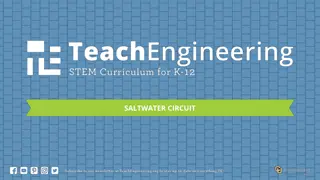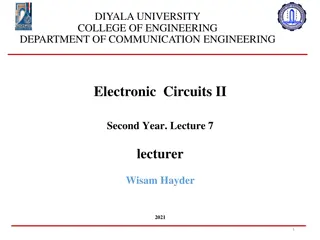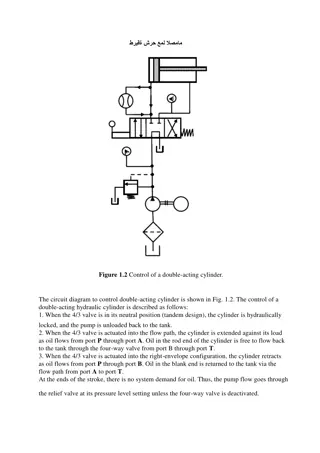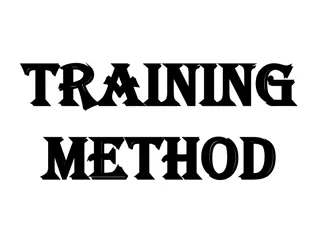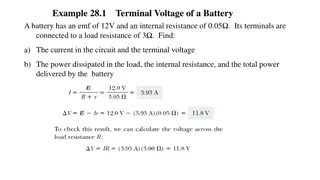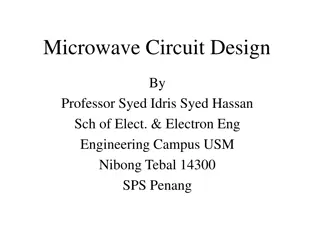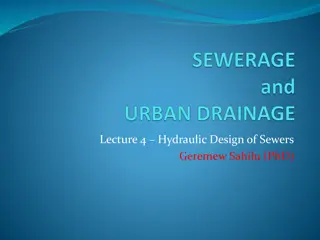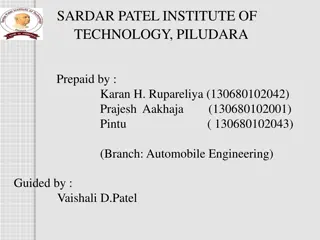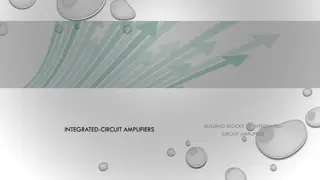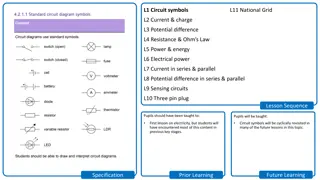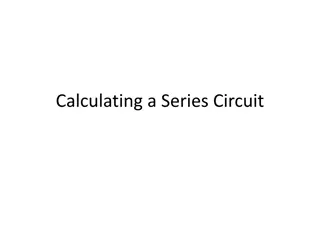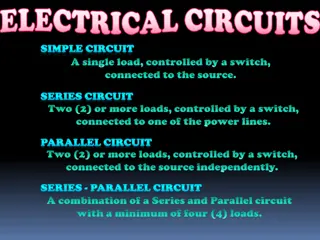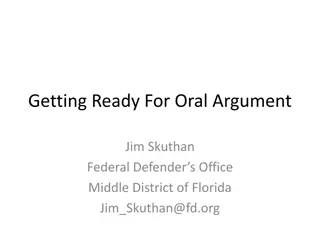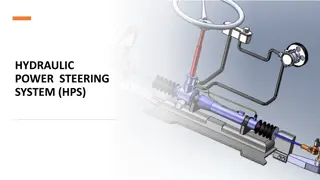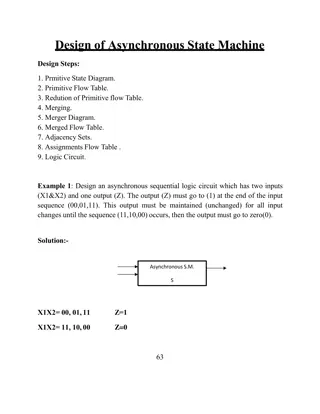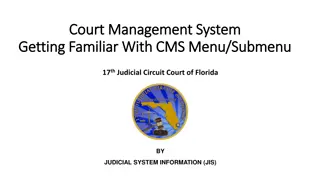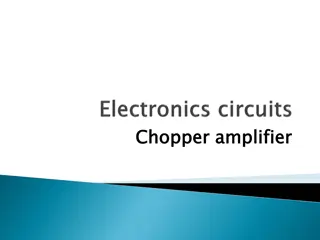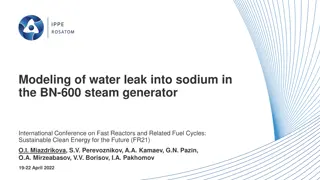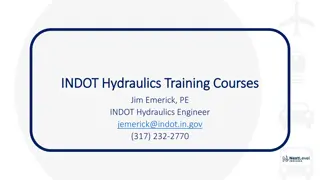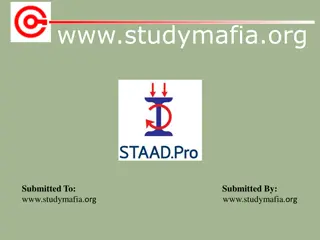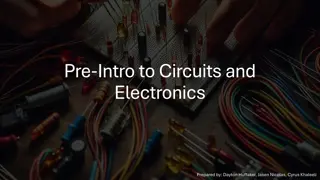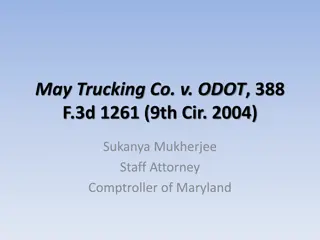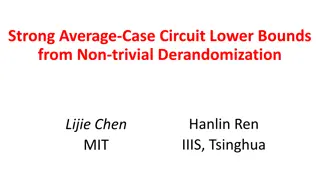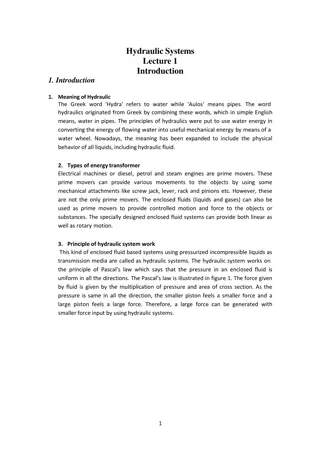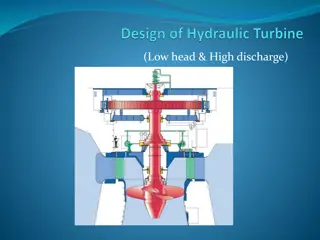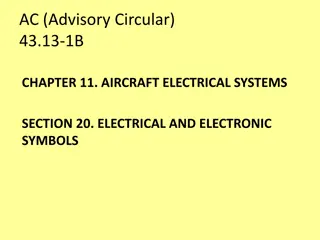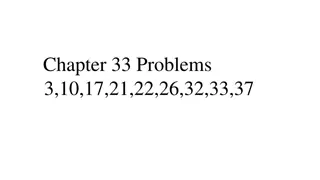Hydraulic Circuit Design and Analysis Overview
Understanding the symbols and components in hydraulic circuits is crucial for designing efficient systems. This chapter covers the basics of hydraulic schematics, various circuit designs, and their operations, providing insights into safety, performance, and efficiency considerations. Explore control, regenerative, pump unloading, counterbalance valve, sequencing, and speed control circuits in detail to enhance your expertise in hydraulic system design.
Download Presentation

Please find below an Image/Link to download the presentation.
The content on the website is provided AS IS for your information and personal use only. It may not be sold, licensed, or shared on other websites without obtaining consent from the author. Download presentation by click this link. If you encounter any issues during the download, it is possible that the publisher has removed the file from their server.
E N D
Presentation Transcript
Lecture 6 Hydraulic circuit design and analysis Objectives After reading this chapter the student will be able to: Identify all the symbols used in hydraulic schematics Understand various hydraulic circuits Understand and explain hydraulic schematics effectively Introduction As we have seen earlier, a hydraulic circuit comprises a group of components such as pumps, actuators, control valves and conductors arranged to perform a useful task. When analyzing or designing a hydraulic circuit, the following considerations must be taken into account: Safety of operation Performance of the desired function Efficiency of operation. Symbols of hydrauliccomponents It is very important for a fluid power technician or a designer to have knowledge of each of the hydraulic components and their functions in a hydraulic circuit. Hydrauliccircuitsare developed by using graphical symbols for all of the components. Therefore it is pertinent to know the symbols ofeach and every componentused in a hydraulic system. The symbols discussed here conform to the American National Standard Institute (ANSI)standards and are tabulated below. 28
Hydrauliccircuits In this section we shall take a look at how various types of hydraulic circuits are designed for efficient operation. We shall examine the followingcircuits: Control of a double acting hydraulic cylinder Regenerative circuit Pump unloading circuit Counterbalance valve application Hydraulic cylinder sequencing circuit Speed control of a hydraulic motor Control of a double acting hydraulic cylinder circuit This circuit is designed as shown in Figure. When the four-way valve is in its spring-centered position, the cylinder is hydraulically locked. Also the pump is loaded back to the tank at atmospheric pressure. 29
Control of a double acting hydrauliccylinder When the four-way valve is actuated into the flow path configuration of the left envelope, the cylinder is extended against its force load (Fload) as oil flows from port P through port A. The oil at the rod end of the cylinder is free to flow back into the reservoir through the four-way valve from port B through port T. The cylinder will not extend if the oil in the rod end is not allowed to flow back to the reservoir. When the four- way valve is de-activated, the spring-centered envelope prevails, and the cylinder is once again hydraulically locked. When the four-way valve is actuated in the right envelope configuration, the cylinder retracts, as oil flows from port P through port B. Oil in the blank end is allowed to flow back to the reservoir from port A through port T of the four-way valve. At the end of the stroke, there is no system demand for oil. Therefore the pump flow goes through the relief valve at its set pressure, unless the four-way valve is de-activated. In any event, the system is protected from cylinder overloads. The check valve prevents the load from retracting the cylinder, while it is being extended using the left envelope flow path configuration. Regenerativecircuit Figure shows a regenerative circuit used to accelerate the extending speed of the double acting hydraulic cylinder. In this system, both ends of the hydraulic cylinder are connected in parallel and one of the ports of the four-way valve is blocked. The operation of the cylinder during the retractionstrokeis the same as that of a regular double acting cylinder. 30
Regenerative circuit Fluid flows through the DCV (direction control valve) via the right envelope during the retraction stroke. In this mode the fluid from the pump bypasses the DCV and enters the rod end of the cylinder. Fluid in the blank end drains back to the tank through the DCV as the cylinder retracts. When the DCV is shifted to the left envelope configuration, the cylinder extends. The speed of extension is greater than that for a regular double acting cylinder. This is because the flow from the rod end (QR) regenerates with the pump flow (Qp) to provide a total flow rate (QT), which is greater than the pump flow rate to the blank end of the cylinder. The equation for extending speed can be obtained as follows: The total flow rate entering the blank end of the cylinder equals the pump flow rate plus the regenerative flow rate coming from the rod end of the cylinder. QT=QP +QR The regenerative flow rate equals the difference of the piston and rod areas (Ap AR) multiplied by the extending speed of the piston (Vpext). Qp=ApVpext-(Ap-AR)Vpext Solving for the extending speed of the piston, we have Vpext=QP/AR The retracting speed of the piston equals the pump flow divided by the difference of the piston and rod areas. VPret=QP/(AP-AR) It should also be borne in mind that the load-carrying capacity of a regenerative cylinder during its extensionstroke is less than that obtainedfor a regular double acting cylinder. 31
Pump unloading circuit Figure depicts a circuit used for unloading a pump using an unloading valve. Pump unloading circuit In this circuit, the unloading valve opens as the cylinder reaches the end of its extension stroke. This is because the check valve keeps the high- pressure oil in the pilot line of the unloading valve. When the DCV is shifted to retract the cylinder, the motion of the cylinder reduces the pressure in the pilot line of the unloading valve. This resets the unloading valve until the cylinder is fully retracted at the point where the unloading valve unloads the pump. It is thus seen that the unloading valve unloads the pump at the end of the extending and retracting strokes as well as in the spring-centeredpositionof the DCV. Counterbalancevalve application Figure illustrates the use of a counterbalance or backpressure valve to keep a verticallymounted cylinder in upward position during pump idling. The counterbalance valve is set to open at a pressure slightly above the pressure required to hold the piston up. This permits the cylinder to be forced downward, when pressure is applied on the top. The open center direction control valve unloads the pump. The DCV used here is a solenoid-actuated, spring-centered valve with an open center flowpath configuration. 32
Counterbalance valve application Hydrauliccylinder sequencing circuit From our earlier discussions, we have seen how a sequence valve can be used to create sequential operations in a hydraulic circuit. The circuit depicted in Figure 10.6 contains a hydraulic system in which two sequence valves are used to control the sequence of operation of two double-actingcylinders. Hydraulic cylinder sequencecircuit When the DCV is shifted into its left envelope mode, the left cylinder extends completely and then the right cylinder extends. If the DCV is shifted into its right envelope mode, the right cylinder retracts fully followed by the left cylinder.This sequence of the cylinder operation is controlled by the sequence valves. The spring centered position of the DCV locks both the cylinders in place. 33
The best example of this circuit is the case of a production operation. The left cylinder should extend in order to accomplish the job of clamping a work piece with the help of a power vice jaw. The right cylinder extends to drive a spindle to drill a hole in the work piece. After the hole has been drilled, the right cylinder retracts first and then the sequence valve installed in the circuit ensures that these operations occurin a predefined fashion. left one. The 34


